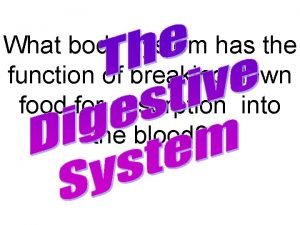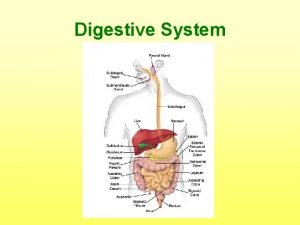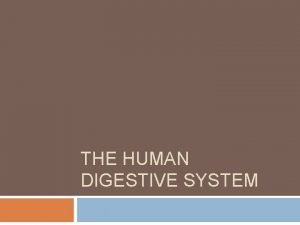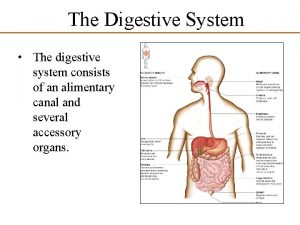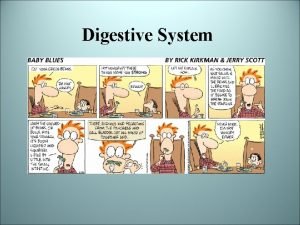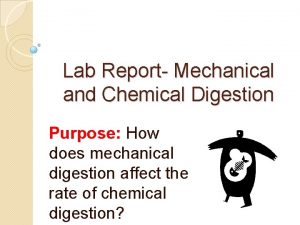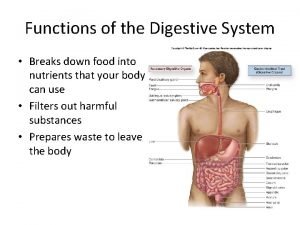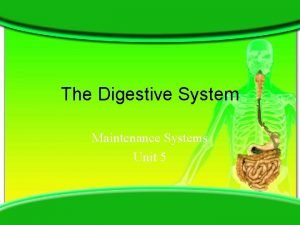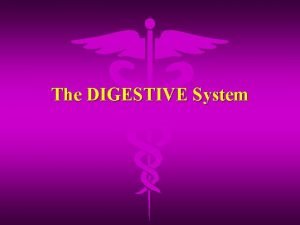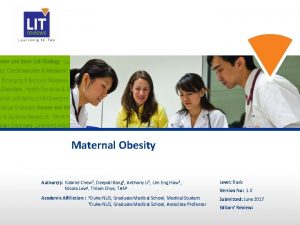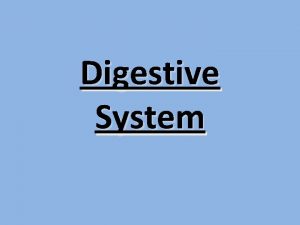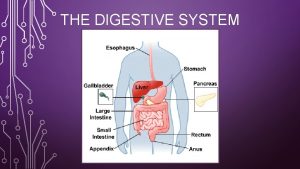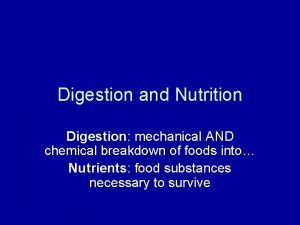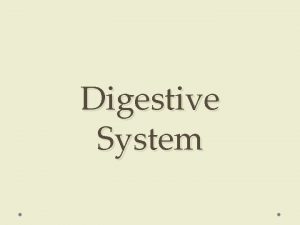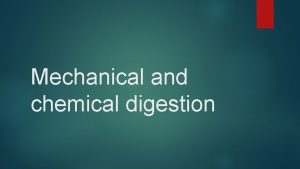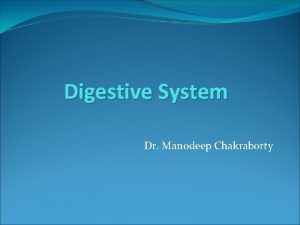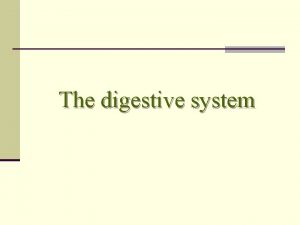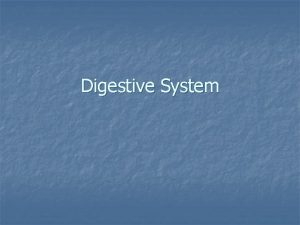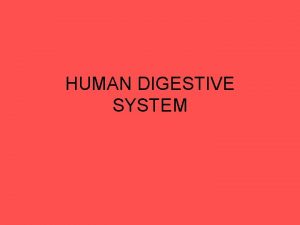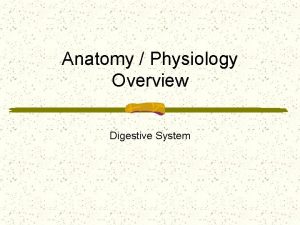DIGESTIVE SYSTEM DIGESTION Types Mechanical physical Chew Tear














- Slides: 14

DIGESTIVE SYSTEM

DIGESTION • Types – Mechanical (physical) • • • Chew Tear Grind Mash Mix – Chemical • Enzymatic reactions to improve digestion of – Carbohydrates – Proteins – Lipids – Elimination (Excretion of waste)

DIGESTIVE SYSTEM ORGANIZATION • Gastrointestinal (Gl) tract – Tube within a tube – Direct link/path between organs – Structures • • Mouth Pharynx Esophagus Stomach Small intestine Large Intestine Rectum 3

MOUTH • Teeth mechanically break down food into small pieces. Tongue mixes food with saliva (contains amylase, which helps break down starch). • Epiglottis is a flap-like structure at the back of the throat that closes over the trachea preventing food from entering it. It is located in the Pharynx.

ESOPHAGUS • Approximately 20 cm long. • Functions include: 1. Secrete mucus 2. Moves food from the throat to the stomach using muscle movement called peristalsis • If acid from the stomach gets in here that’s heartburn. Mouth,

STOMACH • J-shaped muscular bag that stores the food you eat, breaks it down into tiny pieces. • Mixes food with Digestive Juices that contain enzymes to break down Proteins and Lipids • Acid (HCl) in the stomach Kills Bacteria. • Food found in the stomach is called Chyme. 6

SMALL INTESTINE • Small intestines are roughly 7 meters long • Lining of intestine walls has finger-like projections called villi, to increase surface area. • The villi are covered in microvilli which further increases surface area for absorption. Crash Course Review 7

SMALL INTESTINE • Nutrients from the food pass into the bloodstream through the small intestine walls. • Absorbs: – – – 80% ingested water Vitamins Minerals Carbohydrates Proteins Lipids • Secretes digestive enzymes 8

LARGE INTESTINE • About 1. 5 meters long • Accepts what small intestines don’t absorb • Rectum (short term storage which holds feces before it is expelled).

LARGE INTESTINE • Functions – Bacterial digestion • Ferment carbohydrates Absorbs more water – Concentrate wastes –

ACCESSORY ORGANS THE GLANDS • Not part of the path of food, but play a critical role. • Include: Liver, gall bladder, and pancreas

LIVER • Directly affects digestion by producing bile – Bile helps digest fat • filters out toxins and waste including drugs and alcohol and poisons. 12

GALL BLADDER • Stores bile from the liver, releases it into the small intestine. • Fatty diets can cause gallstones

PANCREAS • Produces digestive enzymes to digest fats, carbohydrates and proteins • Regulates blood sugar by producing insulin Web Page Reinforcement Video
 Venn diagram of chemical and mechanical digestion
Venn diagram of chemical and mechanical digestion Protein digestion begins in the _____.
Protein digestion begins in the _____. Circularory system
Circularory system Difference between mechanical and chemical digestion
Difference between mechanical and chemical digestion Mechanical and chemical digestion
Mechanical and chemical digestion Chemical and mechanical digestion
Chemical and mechanical digestion Chapter 24
Chapter 24 Difference of mechanical and chemical digestion
Difference of mechanical and chemical digestion Mechanical digestion
Mechanical digestion Small intestine mechanical digestion
Small intestine mechanical digestion Mechanical digestion in the small intestine
Mechanical digestion in the small intestine Mechanical digestion
Mechanical digestion Kelly's combination syndrome
Kelly's combination syndrome Ng poon chew
Ng poon chew Gabriel chew
Gabriel chew
